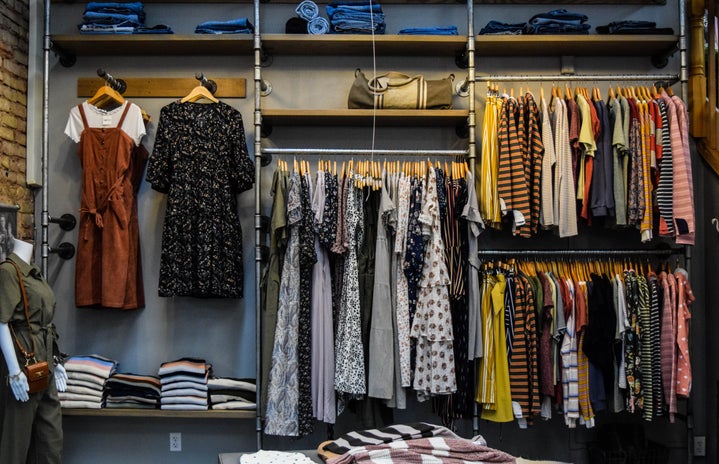As a college student, it is common to be taken by surprise when you hear the “attire slang” of the industry. And maybe on Monday, and your professor asks for business casual in your next presentation. Or, it’s recruitment season, and you need to use business professional for your next interview. As if the stress of the event wasn’t enough, you also need to figure out what on earth these terms could mean! But don’t worry fellow collegiettes, we have a few tips on how to decipher dress codes for your upcoming event.
1. Casual
This is the dress code with hardly any rules. Basically anything goes. A good rule of thumb would be to keep in mind that this dress code does not necessarily show the best impression of you to others (professionally speaking). So, this is the style you want to use when you are not trying to impress for a professional purpose.
2. Smart Casual
This could also be considered as a more proper way of approaching the casual look. It centers a little more in what pieces should, or shouldn’t be worn together. For example, jeans with flip flops is casual, BUT jeans with a pretty but simple sandal is smart casual. Shorts may be seen as casual, BUT if you combine them with a nice tailored jacket or a nice silky blouse, you have smart casual. Same as if instead of just using a camisole, you pair it up with cardigan. In summary, this dress code is all about taking simple pieces and adding well chosen accessories that will class them up. This is the type of style you might want to chose to attend classes or informal seminars since it does show effort from your part without being over-dressed.
3. Business Casual
Now we’ve crossed through the realm of “businesses”. But, we shouldn’t be intimidated by this word; each new style is just a step up from the previous one. In this line, business casual is a standard dress code that is considered appropriate for office appropriate attire without seeming overly formal. The idea when you are thinking of business casual is to aim for a polished look. Some key notes to have in mind is that your pieces should be ironed. This can many times be the line between a silky blouse being smart casual or business casual. Other things to keep in mind is that depending the workplace pieces such as jeans or sandals can stop being business casual. The best way to know whether it is appropriate would be to ask or observe the people around you. In the case that this is a one time occasion then stick to the basics:
-
No jeans (either dress pants or dress skirts)
-
Nice ironed blouses or button ups
-
Closed shoes (if you are using heels try to keep them below the 3”)
You can always add blazers or tailored jackets and accessories. But keep in mind the look should remain polished. When in doubt using small accessories and conservative colors would be the best bet. Keep in mind that for this look it is better to be overdressed than underdressed. Also, basic rules for any business dress code:
-
Never show cleavage, back or midriff
-
Items shouldn’t be too skin tight
-
Unless required by religious or cultural traditions no hats or head covers
4. Business Professional
This would be the most strict dress code and it’s hardly required for interviews. Business professional or business formal requires matching suits. Preferably in black, dark grey, or dark blue. Also the shirts should be of one flat color or simple patterns. For shoes they should be closed-toe, low heeled (below the 2 ½” preferably) in black, dark grey, or dark blue to match the suit. Depending on the workplace or event, this dress code can be more open in terms of colors and requirements, but when in doubt, make sure to follow these rules and remember the basic rules for any business dress code mentioned above.
Each dress code is open to your own sense of fashion and preferences. You never have to stop being who you are for a dress code. Just remember that the way you dress is a simple way to reinforce the things you want to accomplish. You make a statement every time you enter a room, so keep this in mind every time a dress code is not required. Since you might want to auto impose one of the above depending your goals for a specific situation. Nevertheless, don’t forget that what you wear doesn’t make or break you it only compliments who you are and aids you towards success.


